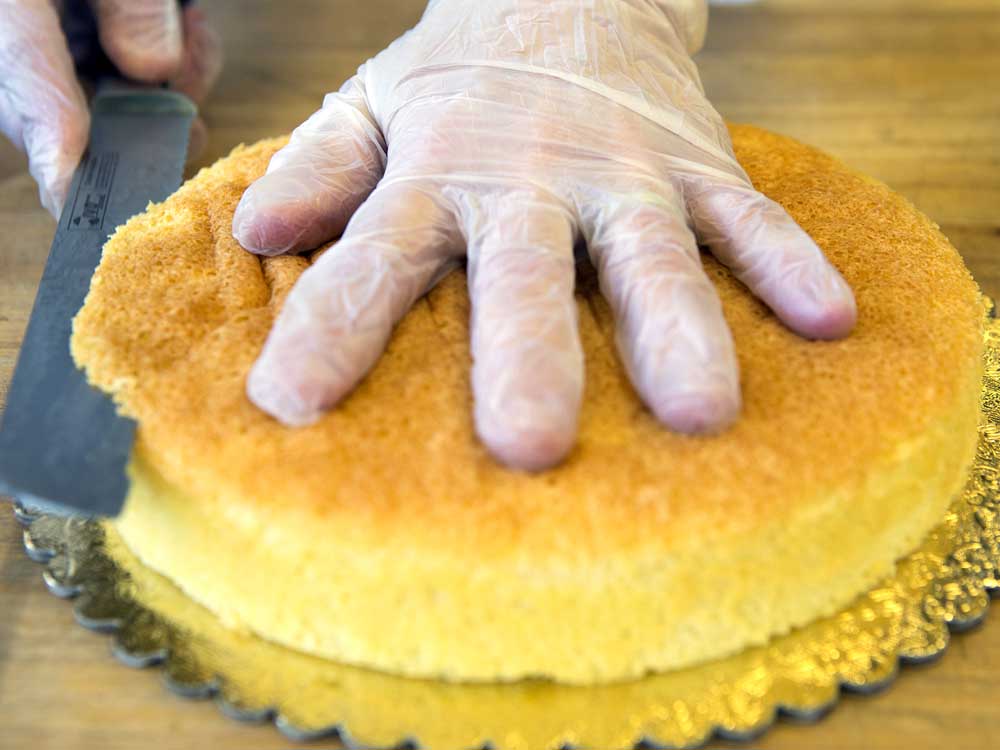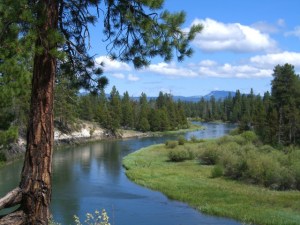Cook Like a Chef: High altitude vanilla sponge cake
Published 12:00 am Tuesday, May 31, 2016

- Tess Freeman/ The Bulletin Cascade Culinary Institute Chef Instructor Laura Hagen cuts the top layer off her vanilla spongecake to expose the more absorbent layer of the cake.
Baking in Central Oregon isn’t a piece of cake. The high altitude can easily crush your enthusiasm along with your cakes, muffins and quick breads.
In today’s Cook Like a Chef, we’ve enlisted the help of Cascade Culinary Institute Chef Instructor and Certified Pastry Chef Laura Hagen to help us through a vanilla spongecake recipe that won’t fall flat.
Trending
“Spongecakes are a little bit easier than some of the other cake recipes, because most of the leavening comes from the eggs in a sponge. They add a lot of structure to a cake, and that’s important when baking at a higher altitude,” Hagen said.
At 3,625 feet above sea level, Bend is considered high altitude, along with Redmond at 3,077 feet and Sisters’ 3,100 feet. The higher the altitude, the lower the air pressure. But what’s that have to do with baking?
“For a long time, I didn’t really understand how air pressure worked, but now I get it, and I tell my students how a cake wants to collapse when there’s low air pressure,” Hagen said.
“Think of walls pushing against you, and you’re pushing out. At high altitude, there’s no wall to hold that air in, so it’s rising and rising, and then collapsing because the wall is weak. To me, that makes the most sense. There’s little pressure (on cake batter as it bakes and rises), so there’s no structure. But if you can control that structure with a little less leavening, by not over-whipping your eggs, and by controlling the dryness here by adding a little more liquid, then it becomes easier to bake successfully at high altitude,” Hagen explained.
One rule of thumb Hagen shared is to always reduce the amount of baking powder in a conventional recipe that you’re trying at high altitude.
“I tell home bakers, when they’re having problems with baking, to reduce the baking powder in a recipe by one-third — and it typically works,” Hagen said.
Trending
In this vanilla spongecake recipe, measure the cake flour before you sift it, and make sure you level the cup of flour with a knife.
As with any baking project, be precise in your measurements, and use a baking scale, if you like. The accompanying cake recipe also gives metric measurements in case you’re using a kitchen scale.
Have your eggs at room temperature to make sure they whip up to a nice volume.
At the Cascade Culinary Institute, Hagen instructs her students to whisk the eggs and sugar in a double boiler until they reach 110 degrees, and then the mixture goes into the bowl of a stand mixer.
They mix it until it reaches the “ribbon stage,” when the eggs have doubled in volume after about three to five minutes and the mixture can be picked up with a whisk, resulting in ribbons of batter falling into itself.
Hagen told us she loves this recipe, especially in the spring.
“This is one of my favorite recipes because it’s really foolproof. It’s almost like a chiffon cake. It’s super moist and always rises if I’m careful with my technique, and it’s not too heavy. It’s perfect for spring because it’s light and will take on a lot of flavors. You can top it or layer it with a lemon curd, whipped cream or even a mousse. It’s perfect with whipped cream and berries,” she said.
Hagen cautions against icing it with a buttercream frosting, since that would be too heavy.
This recipe is flavored delicately with fresh lemon juice, but if you prefer the flavor of almond, replace the lemon juice with ¼ teaspoon of almond extract plus ¼ teaspoon of vanilla extract.
To add a little more moisture to the cake, dab it with some simple syrup (see recipe) before slathering the top with whipped cream or berries or both.
And remember, when you cook like a chef, you’re going to want to practice new techniques a few times before you perfect them. If at first you don’t get a perfectly risen, light and crumbly cake, try, try again. Baking at high altitude is tricky, but not impossible.
— Reporter: ahighberger@ mac.com








